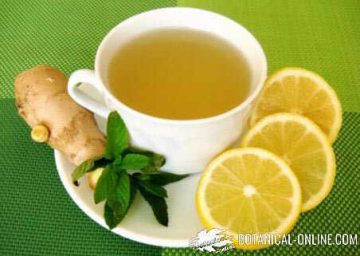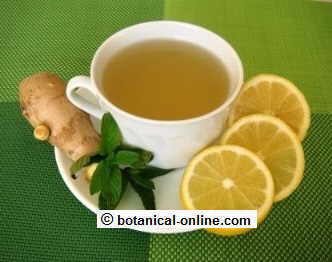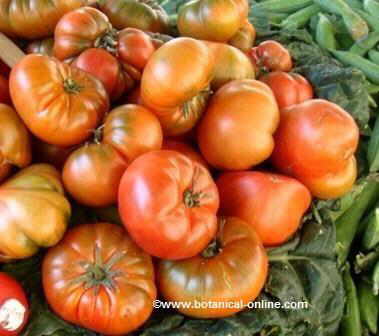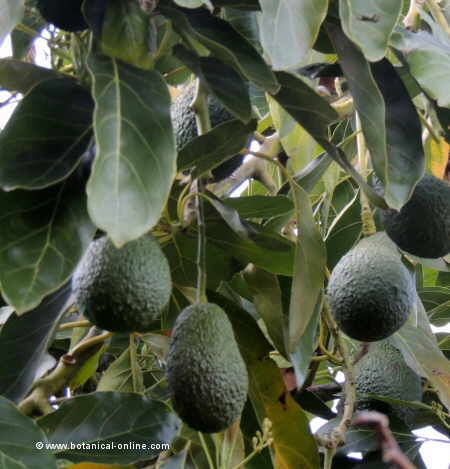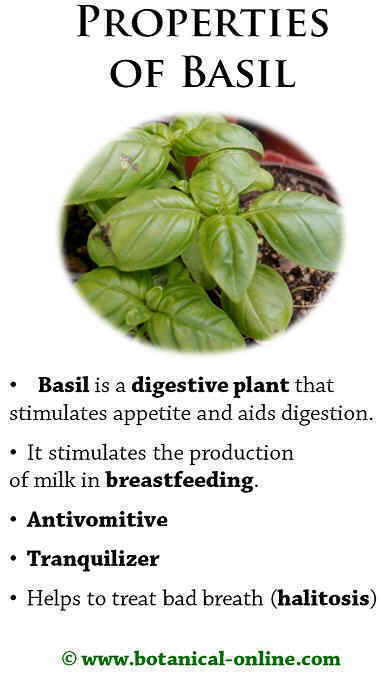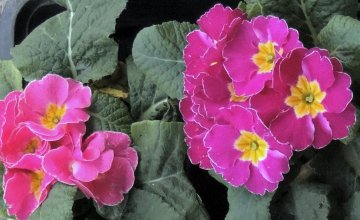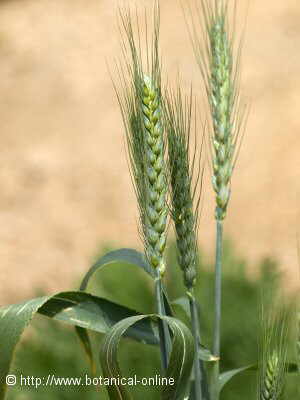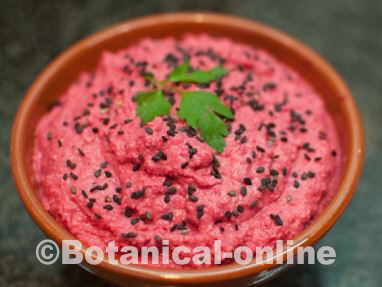Contents
- 1 How to take ginger, properties and benefits
- 1.1 What is ginger tea used for?
- 1.2 Indications and uses of ginger infusion
- 1.3 Properties of ginger infusion
- 1.4 How to prepare the ginger infusion?
- 1.5 Ginger infusion ingredients:
- 1.6 Preparation of ginger infusion
- 1.7 How much ginger for the infusion?
- 1.8 Medicinal uses of ginger
- 1.9 Ginger for arthritis
- 1.10 Active principles of ginger infusion, gingerols
How to take ginger, properties and benefits
What is ginger tea used for?
Ginger (Zingiber officinale) is a medicinal plant with digestive, antibiotic, antivomitive, anti-inflammatory and analgesic properties.
Indications and uses of ginger infusion
Among its numerous applications as a natural remedy, the following benefits of ginger infusion can be highlighted:

Infusion with ginger lemon and mint Stimulating properties
- Antibiotic properties
- Tonic for the digestive organs
- It stimulates salivation
- Remedy for dry mouth
- Powerful anti-inflammatory
Properties of ginger infusion
Ginger is one of the most powerful natural anti-inflammatories out there, along with turmeric and rosemary. Women can use this infusion to relieve menstrual pain during this period of the month, as it is a powerful anti-inflammatory and menstrual regulator. To do this, of course, treatment must be combined with an anti-inflammatory diet. Ginger infusions for arthritis are recommended for the same purpose.
In addition, the infusion of ginger, due to its properties, is very suitable in liver cleansing diets, being very suitable for reducing inflammation in the body and helping to recover from fatty liver, obesity, diabetes and high cholesterol.
Taken after eating, ginger tea is digestive and prevents flatulence problems.
As a powerful natural antibiotic, ginger is a good adjuvant in the natural treatment of respiratory, digestive and genitourinary infections. It is therefore indicated in cases of bronchitis, cough, indigestion, flatulence, diarrhea, constipation, cystitis, etc. Ginger is especially recommended for people with gastritis problems caused by Helicobacter pylori.
How to prepare the ginger infusion?
Ginger infusion ingredients:
Preparation of ginger infusion
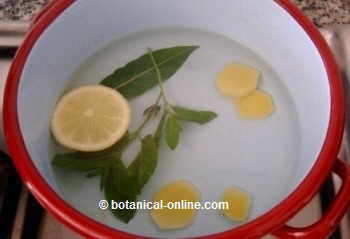
Ginger infusion is prepared as follows:
- Cut a piece of fresh ginger root (approximately 10 g per cup).
- Peel the ginger and cut it into slices.
- Put water on to boil.
- Before the water boils, add the ginger and turn off the heat.
- Cover and let stand 8 minutes before serving.
- Ginger can also be added in the following way: Grate the root and squeeze the juice directly into the infusion water. Let stand with lid for 8 minutes.
*Related information: Benefits of rosemary and ginger infusion / Thyme and ginger infusion properties
How much ginger for the infusion?
Ginger is a very powerful spice that should be used in small amounts. In large doses, ginger-laden infusions can cause adverse effects such as stomach pain, headache, gastritis, or simply be impossible to swallow. If what you want is a powerful treatment, it is not advisable to increase the dose of the plant, but rather take more infusions.
- The recommended amount of fresh ginger is about the size of a hazelnut, per person or for every two people.
- The recommended amount of dried ginger is 2 thin slices or 1/2 to 1 teaspoon of dried ginger per cup or two cups.
Medicinal uses of ginger
Ginger is a general stimulant for the body. Ginger infusions are recommended for:
- It stimulate salivation and is a remedy for dry mouth.

Infusion with ginger, lemon and mint Digestive properties: They stimulate the production of pancreatic digestive juices. Very suitable infusion after meals when there is heavy digestion or a swollen belly after eating (combine with carminative plants such as cumin or anise).
- Ginger is an enhancer.
- It is expectorant, analgesic and antibacterial.
- To treat toothache.
- Cold: To decongest, expectorate and reduce fever. It can be combined with a bay leaf to enhance its effects.
- It fights the bacteria that cause bad breath.
- It is an excellent antivomitive.
- Against travel sickness.
- It fights the bacteria that cause gastritis. Ginger is one of the recommended plants in the diet for Helicobacter pylori. It neutralizes excess acid, is suitable for heartburn and prevents the appearance of peptic ulcer.
Ginger for arthritis
Ginger is one of the best vegetable anti-inflammatories and pain relievers. The ingestion of this food reduces inflammation and relieves the pain caused by rheumatoid arthritis.
It is said that gingerols are responsible for ginger being good for arthritis. It is a very simple explanation, given that gingerols have anti-inflammatory and analgesic activity but not specifically anti-arthritic…
* More information: Properties of ginger for arthritis
Active principles of ginger infusion, gingerols
Gingerol is one of the active ingredients in ginger. Gingerol gives raw ginger its typical pungent flavor. Gingerol only appears as such when ginger is fresh, as cooking transforms it into zingerone, which has a superior aroma but less pungent taste.
On the other hand, the flavor of ginger is enhanced when dried, since gingerol transforms into shogaol…
* See more: Properties of gingerol
![]() More information on contraindications and uses of ginger
More information on contraindications and uses of ginger

